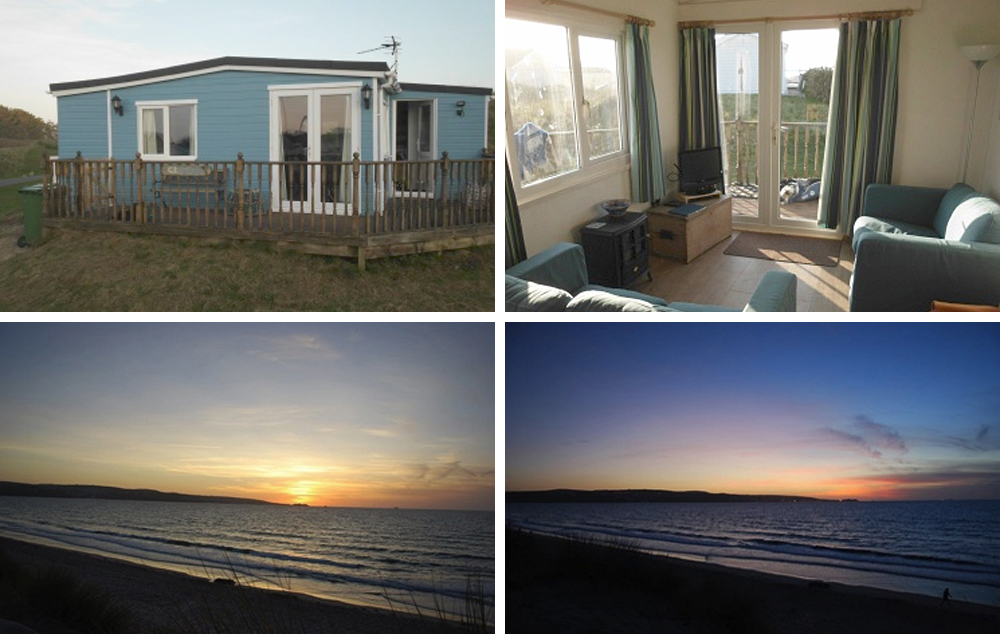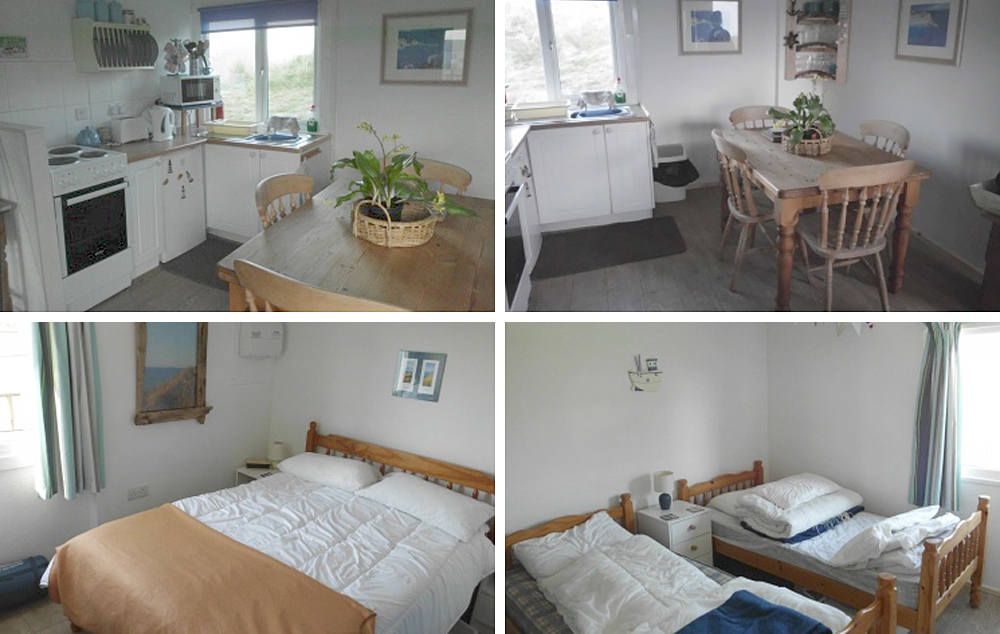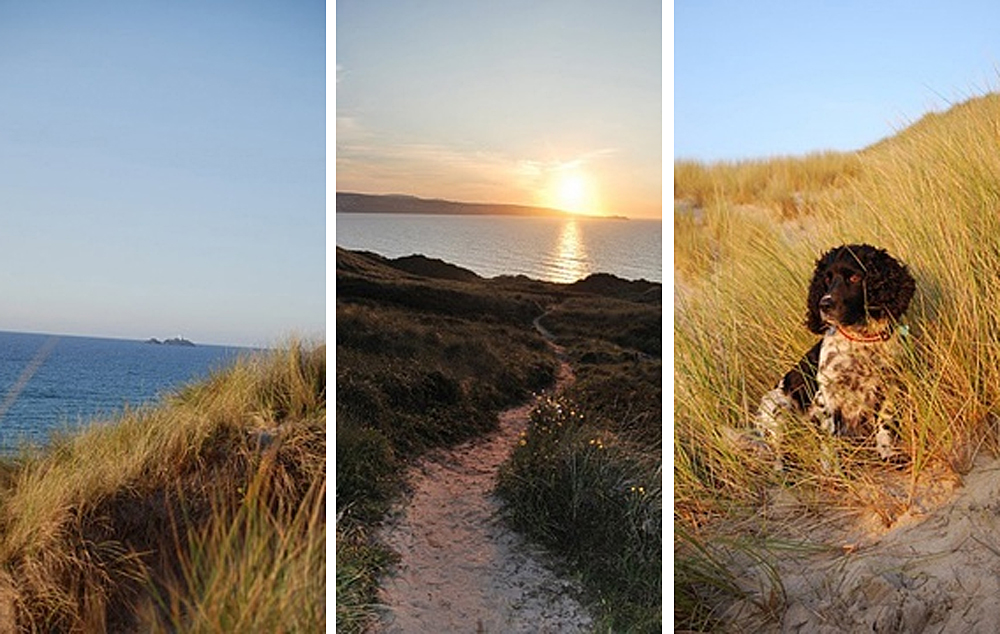This beautiful traditional clapboard chalet is situated on the renowned Riviere Towans, nestled amongst miles of undulating sand dunes and a stone’s throw away from Hayle beach – 3 miles of spectacular golden sands, excellent for surfing, swimming and extremely family friendly. There are many lifeguarded sections and long stretches of the beach are dog friendly all year round. The beach is so long it never gets anywhere near crowded.
Hayle beach is opposite St. Ives and all of its attractions. Just 6 miles by road – you can now get there on the new boat service running form Hayle harbour. Highly recommended is Britain’s most popular train journey last year from St Erth to St. Ives. A short hop with spectacular scenery and no car parking hassles.
- Mobile: 07765712759 or 01736 369216 | Email: adavies45@yahoo.com
Electricity is included! Dogs are welcome at no extra charge. ‘Rhondda’ is extremely dog friendly. Owned by a dog lover, who loves spending time there with family, friends and as many dogs as we can fit in (and even the occasional cat!). They just love it. Hagrid, a dog, was so happy he didn’t stop chasing his tail for a week. He loves it here so much he never wants to go home. There is no charge for doggies.
Hayle is best known for its three mile beaches of golden sand. The beach extends from Hayle to Godrevy Lighthouse. The lighthouse is located on a island just off the beach. It inspired Virginia Woolf to write her novel To The Lighthouse.
Hayle Beach – A fantastic beach for the family, it is patrolled by life guards during the summer. Not only is it good for swimming and sunbathing but it also used for surfing and wind surfing.
The Towans sand dunes edge onto the beach. Here can be found a variety of holiday accommodation i.e. chalets and caravans located really close to the beach.
Hayle’s estuary, with its muddy tidal flats, is a magnet to many exotic birds and is heavily frequented by bird watchers.
The temperate climate of the area means that the flats do not freeze. Because of this, migratory birds use it as a resting and feeding place.
Additionally for those with an interest in birds, there is Paradise Park.
For those interested in beer, the excellent family “Bucket of Blood” pub is just down the road at Phillack (~0.5miles). It serves HSD, Proper Job and Dartmoor, and good pub food – booking is essential in busy weeks
Hayle is only six miles from Penzance. This is a town with a rich industrial heritage, coming into importance in the eighteenth century, with the growth of copper production in this part of Cornwall.
The money and raw materials from mining allowed the town to flourish and provided the drive to set up iron foundries and smelters that produced goods, not only for local consumption but for export to all over the British Empire. Hayle became known for its engineering, particularly for the production of steam engines. Harvey’s also used to its expertise to produce cannons, one of which can be seen on the main road just before entering Hayle.
- ‘Rhondda’ is available from April 1st or Easter, whichever is the earliest, through to October 31st.
- It is also available for a few weeks around Christmas and New Year.
- Changeover day is Saturday and access is from 4 p.m. until 10 a.m. on day of departure. This is negotiable.
- When booking choose whether you will pay by internet banking or cheque.
- Choose to pay a deposit or in full.
- Holiday reserved, subject to confirmation by the owner.
- Alternatively give us a call and we will make the booking for you.
Sandraline is a beautiful traditional chalet in the renowned Riviere Towans, nestling amongst miles of sand dunes, a stone’s throw from the spectacular Hayle beach. Views across the bay to St. Ives. The chalet has 2 bedrooms (1 double, 1 with bunks), kitchen/living area, conservatory/dining area, bathroom. A sofabed in the living area sleeps two extra people. Sleeps up to 6.
Both Rhondda & Sandraline can be booked together to sleep 8 in total – please contact us for further details.



